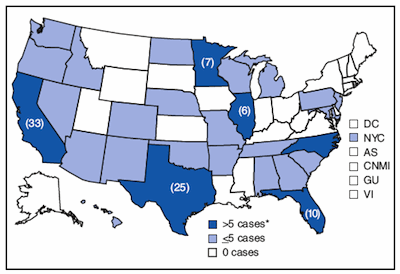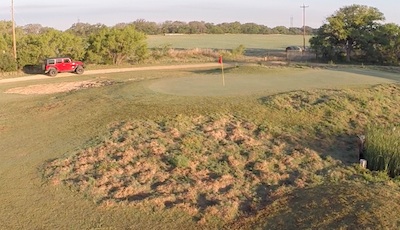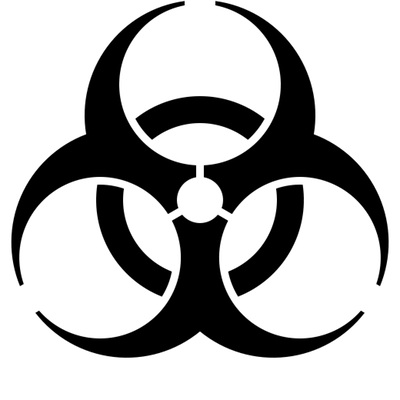 Most people know that feral pigs are nasty creatures. What many don’t know is just how nasty they are. Not only are they dangerous when they are alive and angry, they are also dangerous once they’re dead. Hogs carry numerous diseases and parasites. Some are dangerous to livestock. Some are dangerous to humans. Studies conducted in the Gulf Coast states have shown that over 50% of feral pigs in a given county are infected with just one of the diseases that is known to be transmitted to humans via contact with it after it has been killed by a hunter. Then there are all the parasites pigs carry. I have family members that have been infected by unfriendly parasites. Trust me – that is one program you don’t want to sign up for.
Most people know that feral pigs are nasty creatures. What many don’t know is just how nasty they are. Not only are they dangerous when they are alive and angry, they are also dangerous once they’re dead. Hogs carry numerous diseases and parasites. Some are dangerous to livestock. Some are dangerous to humans. Studies conducted in the Gulf Coast states have shown that over 50% of feral pigs in a given county are infected with just one of the diseases that is known to be transmitted to humans via contact with it after it has been killed by a hunter. Then there are all the parasites pigs carry. I have family members that have been infected by unfriendly parasites. Trust me – that is one program you don’t want to sign up for.
I’m pretty good at killing pigs. But when it comes the finer points of animal science and biology, I leave it to the experts. Allow me to briefly introduce Chris Magee.
Like many of us, Chris Magee is an avid hog hunter. He also is a Doctor of Veterinary Medicine and a Captain in the US Army. In other words, when he isn’t on duty caring for animals in the vets office at Fort Campbell, you may find him out killing wild pigs. Capt. Magee knows animals and he knows animal diseases.
Here’s his take on one of the dangerous diseases you need to know about, and how to avoid it:
 It’s plain to see the destruction caused by the wild hog population across many parts of the country. What is maybe not so obvious is the threat that these hogs also pose to your own personal health and well being. Many diseases that hogs carry are just as readily shared between the hog and you as much as they are within the herd itself. Diseases that can be transferred from animals to man are referred to as “zoonotic diseases”, and unfortunately, wild hogs have the potential to transmit quite a few of these. This article will focus on one of those diseases in particular.
It’s plain to see the destruction caused by the wild hog population across many parts of the country. What is maybe not so obvious is the threat that these hogs also pose to your own personal health and well being. Many diseases that hogs carry are just as readily shared between the hog and you as much as they are within the herd itself. Diseases that can be transferred from animals to man are referred to as “zoonotic diseases”, and unfortunately, wild hogs have the potential to transmit quite a few of these. This article will focus on one of those diseases in particular.
Brucellosis in pigs, caused by the bacteria Brucella suis, is typically a self-limiting condition in herds, but the agent can remain present and viable in carrier animals for years. Signs of this disease in pigs include abortion, sterility, lameness, paralysis, or inflammation of the reproductive organs or vertebrae. While domestic herds have a low incidence of brucellosis, wild hog populations have a significantly higher rate of infection (estimated at 10% of Texas wild hogs, for example).
 This bacteria is spread among the hogs by ingestion of infected tissues or fluids, and by infected boars during breeding. Hunters may become infected if exposed to blood, fluid, or tissues (especially reproductive organs and mammary glands) of an infected pig. The eyes, mouth, or any cut or abrasion of the skin provide a perfect avenue for the infection to gain entry. It is therefore critical to ensure protective equipment is worn when dressing a wild hog (goggles, face mask, and thick rubber/latex gloves). There are often no indications that a pig is carrying the disease, so treat each one as a potential threat. Brucellosis does not affect the meat, however, as with all pork, it should always be thoroughly cooked.
This bacteria is spread among the hogs by ingestion of infected tissues or fluids, and by infected boars during breeding. Hunters may become infected if exposed to blood, fluid, or tissues (especially reproductive organs and mammary glands) of an infected pig. The eyes, mouth, or any cut or abrasion of the skin provide a perfect avenue for the infection to gain entry. It is therefore critical to ensure protective equipment is worn when dressing a wild hog (goggles, face mask, and thick rubber/latex gloves). There are often no indications that a pig is carrying the disease, so treat each one as a potential threat. Brucellosis does not affect the meat, however, as with all pork, it should always be thoroughly cooked.
Symptoms of Brucellosis in humans include fever, sweating, weakness, headaches, depression, weight loss, and muscular or joint pain. While typically not fatal, the nature of the infection is chronic and debilitating, and treatment can be long and difficult. The signs are often not distinctive enough for obvious diagnosis, so any exposure to wild hogs should be relayed to your physician if any of these signs appear. Also complicating diagnosis, symptoms may not appear until months after exposure.
 And just to provide another view of the severity of this particular bacteria, Brucella suis was weaponized as a biological warfare agent by the U.S. during the time of the offensive biological weapons program.
And just to provide another view of the severity of this particular bacteria, Brucella suis was weaponized as a biological warfare agent by the U.S. during the time of the offensive biological weapons program.
As is often the case, your best defense is a working knowledge of what you may be up against. Take the proper precautions while dressing your hogs in the future—we need all of you at the top of your game to take down as many of these pests as we can.
-Chris Magee, DVM
Many of you have hunted hogs, dressed hogs, and disposed of carcasses without protective gear. Some of you, however, have probably seen first hand the effects of Brucellosis. Want to weigh in? SHWAT™ Team Members add your comments below, or join us in the conversation on social media.

